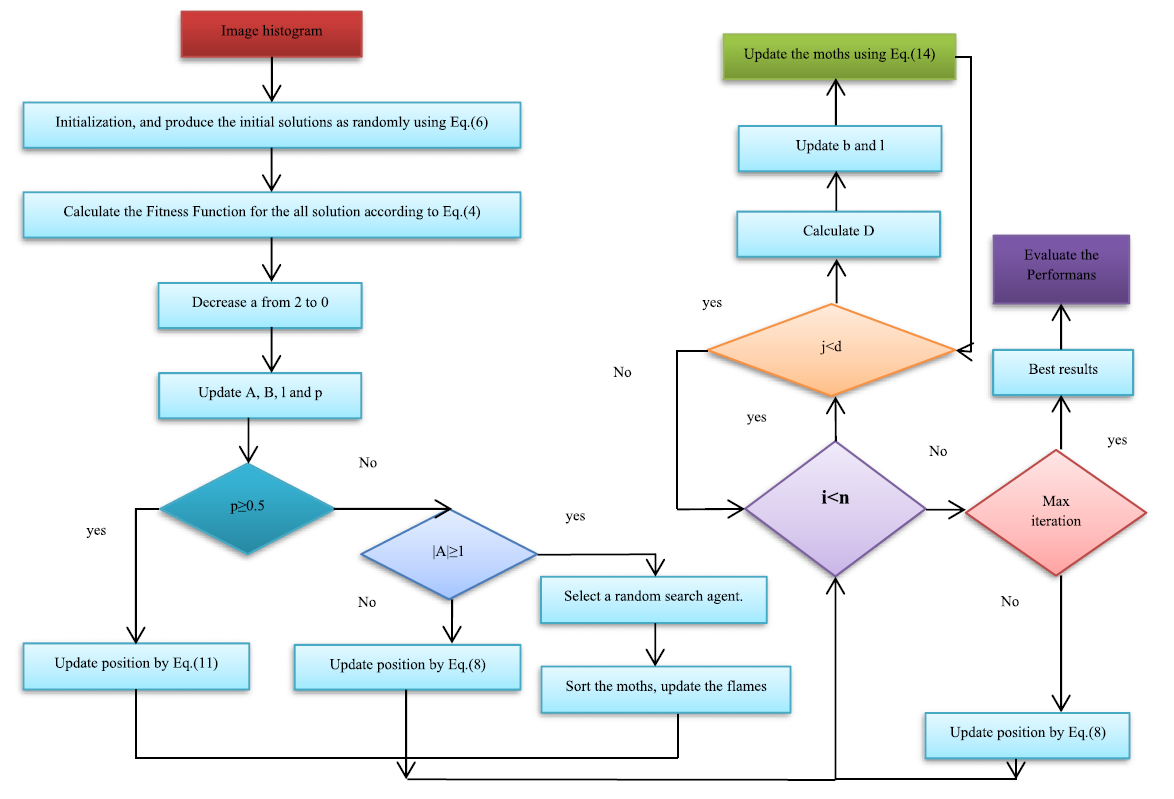
Segmentation is considered as an essential step in image processing. This process divides different parts of the image into several categories. Multi-level Thresholding is a method that facilitates this process. The problem is to correctly segment each image to find the best set of thresholds [1]. Thresholding usually uses image processing methods due to its consistency and low Computational Complexity (CC). Two main methods are Otsu's method [2-4] and Kapur's method [5,6]. However, such approaches have high CC for Multi-level Thresholding [7]. Thresholds help each other to separate interesting objects from their background. The higher splitting quality depends on the selected thresholds [8]. Recently, Meta-Heuristic (MH) algorithms like Particle Swarm Optimization (PSO) [9], Whale Optimization Algorithm (WOA) [10], Moth-Flame Optimization (MFO) [11] have been successfully applied for Thresholding problems [3,8,12], and ABC [13,14] and, Harris Hawks Optimizer (HHO) [15] are used in other problems. MH algorithms have attracted the attention of researchers due to their excellent performance in finding threshold vectors in Multi-level Thresholding Image Segmentation (MTIS) systems. MH algorithms are either used separately in these problems, or been used in a combined version to solve the MTIS. Most MH algorithms are population-based and initially find a plausible answer by randomly moving through the search space. Such algorithms also include two phases of exploration and exploitation to search for the desired solution on the search space, through which the two phases search globally and locally, respectively. Therefore, several attempts have been made in the literature to achieve a better balance between exploration and exploitation phases to ensure maximum performance on a given optimization problem. In this chapter, our contribution is the design and implementation of an MTIS system using a combination of WOA, MFO, and the Inverse Otsu (IO) Function. This modification is developed using the operators of the MFO algorithm in an attempt to enhance the exploitation phase of WOA during the process of finding the optimal solution for a given optimization problem. It is used to increase the system's performance so that the combined MFWOA algorithm performs better than WOA and MFO and provides better solutions. Therefore, the optimal exploration and exploitation properties of MFO and WOA are used in the search space to find the best thresholds. The rest of our chapter is organized as follows: Section 45.2 presents an overview of related work. In Section 45.3, we describe the prerequisites used in the proposed method. Section 45.4 offers the proposed method. Section 45.5 describes the performance analysis and test results. Finally, Section 45.6 presents the conclusions. 45.2 Related work The works that have been done so far in the field of MTIS using MH algorithms are single MH and Hybrid MH, which are briefly described in the following. Handbook of Whale Optimization Algorithm.